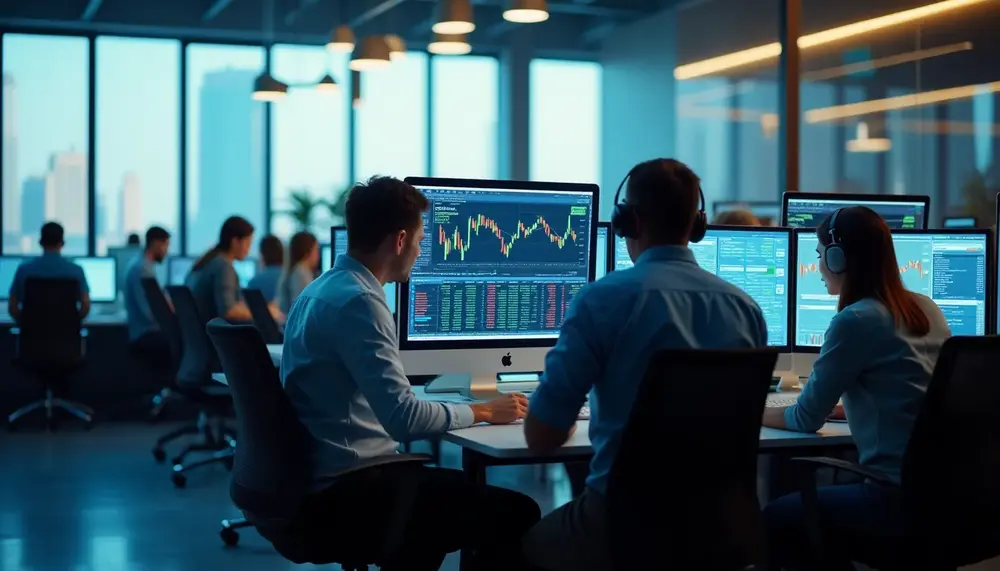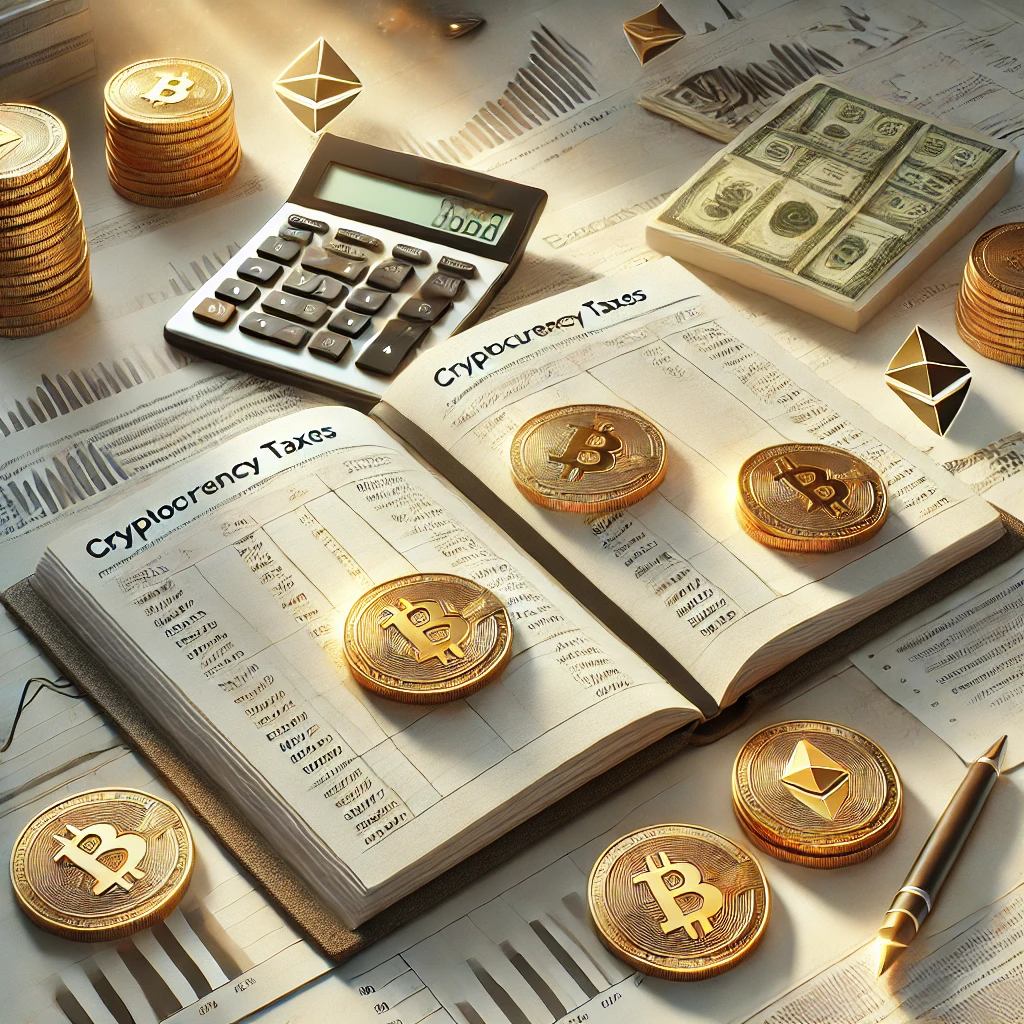Table of Contents:
Understanding the Trading Floor: A Comprehensive Introduction
When you hear the term "trading floor," you might picture a chaotic scene with traders shouting and gesturing wildly. While this image is rooted in reality, the concept of a trading floor goes far beyond this dramatic portrayal. At its core, a trading floor is a hub of financial activity, where decisions are made in real-time, and markets are shaped by the actions of those present.
What makes a trading floor unique is its dynamic environment. Unlike the calm, algorithm-driven processes of electronic trading, physical trading floors thrive on human interaction, quick thinking, and the ability to interpret subtle cues. It's not just about numbers; it's about reading the room, anticipating trends, and reacting faster than the competition.
Interestingly, trading floors are not confined to stock exchanges. They can also be found in investment banks, commodity markets, and even energy trading firms. Each of these environments has its own rhythm, its own rules, and its own challenges. But the essence remains the same: a space where financial instruments are bought and sold, and where every second counts.
In a world increasingly dominated by digital systems, understanding the role and function of trading floors provides a fascinating glimpse into the intersection of tradition and innovation. They are, in many ways, the beating heart of the financial world, where human expertise meets the relentless pace of modern markets.
The History of Trading Floors and Their Evolution
The story of trading floors is one of constant adaptation, reflecting the broader evolution of financial markets. Originally, trading floors emerged as physical spaces where buyers and sellers could meet face-to-face to exchange goods, securities, or commodities. These early venues were marked by their simplicity—transactions were often sealed with a handshake, and deals relied heavily on trust and personal relationships.
By the late 19th and early 20th centuries, trading floors became more structured, especially with the rise of organized exchanges like the New York Stock Exchange (NYSE). The introduction of the open-outcry system transformed these spaces into high-energy arenas. Traders would shout bids and offers, using hand signals to communicate across crowded rooms. This system, while chaotic, was surprisingly efficient for its time, enabling large volumes of trades to be executed rapidly.
However, the landscape began to shift dramatically in the late 20th century. The advent of electronic trading platforms in the 1980s and 1990s marked the beginning of a new era. These platforms introduced speed and precision that human traders simply couldn’t match. As a result, many traditional trading floors saw a decline in activity, with some even closing their doors permanently.
Despite this, trading floors didn’t vanish entirely. Instead, they evolved. Today, the remaining floors, such as the NYSE, have embraced a hybrid model, combining the human expertise of floor traders with the efficiency of electronic systems. This blend of old and new ensures that trading floors continue to play a role in specialized and complex transactions, even in a world dominated by algorithms.
Key Features of Traditional Trading Floors
Traditional trading floors were defined by their unique characteristics, creating an environment unlike any other in the financial world. These features not only facilitated trading but also shaped the culture and dynamics of the markets they served.
- Open-Outcry System: At the heart of traditional trading floors was the open-outcry system. Traders used a combination of verbal bids, offers, and hand signals to communicate quickly and effectively. This system relied heavily on sharp instincts and the ability to process information in real-time.
- Physical Proximity: The close quarters of trading floors allowed for rapid interaction. Being physically present meant traders could gauge each other's reactions, pick up on subtle cues, and adjust their strategies instantly. This proximity fostered a competitive yet collaborative atmosphere.
- Specialized Trading Pits: Many trading floors were organized into "pits," each dedicated to a specific asset class or financial instrument. For example, one pit might focus on equities, while another handled commodities or derivatives. This specialization streamlined the trading process and reduced confusion.
- Role of Market Makers: Market makers played a critical role on traditional floors. These individuals ensured liquidity by continuously quoting buy and sell prices, bridging the gap between buyers and sellers. Their presence was essential for maintaining an orderly market.
- Auditory and Visual Signals: Beyond hand gestures, traditional trading floors were filled with auditory signals like bells, buzzers, or even gongs to indicate market openings, closings, or significant events. These signals added structure to the otherwise chaotic environment.
These features made traditional trading floors a vibrant, high-pressure setting where quick thinking and adaptability were paramount. While much of this has been replaced by digital systems, the legacy of these elements still influences how markets operate today.
Transition from Open-Outcry to Electronic Trading Systems
The shift from the open-outcry system to electronic trading systems marked a seismic change in the financial world. This transition wasn’t just about replacing shouting traders with silent servers; it fundamentally altered how markets function, introducing both opportunities and challenges.
One of the key drivers behind this change was the need for speed and efficiency. Open-outcry, while effective in its time, was inherently limited by human capacity. Electronic systems, on the other hand, allowed trades to be executed in milliseconds, reducing delays and increasing market liquidity. This shift also made markets more accessible, as traders no longer needed to be physically present on the floor to participate.
Another major factor was the ability to handle larger volumes of data. As financial markets grew more complex, the sheer amount of information became overwhelming for manual systems. Electronic platforms could process and analyze this data in real-time, enabling traders to make more informed decisions.
- Transparency: Electronic systems brought greater transparency to the trading process. Prices, volumes, and order books became visible to all participants, reducing the potential for manipulation.
- Global Reach: With the advent of electronic trading, geographical barriers disappeared. Traders from around the world could now access markets 24/7, creating a truly global financial ecosystem.
- Algorithmic Trading: The rise of electronic systems paved the way for algorithmic trading, where complex mathematical models execute trades automatically. This innovation further increased efficiency but also introduced new risks, such as flash crashes.
Despite these advancements, the transition wasn’t without its critics. Many argued that the human element of trading was lost, and with it, the ability to manage certain nuances that algorithms couldn’t replicate. Moreover, the reliance on technology introduced vulnerabilities, such as system outages and cybersecurity threats.
Ultimately, the move to electronic trading systems reshaped the financial landscape, creating a faster, more interconnected market. Yet, the echoes of the open-outcry era remain, reminding us of the importance of adaptability in an ever-evolving industry.
Modern Trading Floors: How They Operate Today
Modern trading floors have undergone a significant transformation, blending traditional practices with cutting-edge technology to remain relevant in today’s fast-paced financial markets. While the shouting and hand signals of the past have largely faded, these spaces are far from obsolete. Instead, they have adapted to serve specialized roles that complement the rise of electronic trading systems.
Today, trading floors are often quieter, but they remain hubs of activity where human expertise is crucial. Here’s how they operate in the modern era:
- Hybrid Trading Models: Many trading floors, such as the NYSE, now use a hybrid system. This combines electronic order matching with human oversight, particularly for large or complex trades that require nuanced decision-making. Traders on the floor act as intermediaries, ensuring smooth execution and resolving discrepancies when algorithms fall short.
- Specialized Roles: Modern trading floors focus on areas where human judgment is still invaluable. For example, market makers and designated market makers (DMMs) are responsible for maintaining liquidity and order in the market, especially during volatile periods.
- Advanced Workstations: Traders are equipped with sophisticated terminals that provide real-time data, analytics, and communication tools. These workstations allow them to monitor global markets, execute trades, and collaborate with colleagues seamlessly.
- Focus on Collaboration: Unlike the isolated nature of algorithmic trading, modern trading floors emphasize teamwork. Traders, analysts, and risk managers work together to interpret market trends and develop strategies, leveraging both technology and human insight.
Interestingly, the physical presence of traders on the floor still plays a psychological role. During major market events, having experienced professionals on-site can help stabilize trading activity and provide reassurance to investors. This human element remains a key differentiator, even in an era dominated by automation.
In essence, modern trading floors are no longer the chaotic arenas of the past. Instead, they have evolved into highly specialized environments where technology and human expertise coexist, ensuring that markets function efficiently while retaining a level of adaptability that machines alone cannot provide.
The Role of Technology in Shaping Contemporary Trading Strategies
Technology has become the backbone of contemporary trading strategies, reshaping how markets operate and how traders approach decision-making. From advanced analytics to high-frequency trading, the integration of technology has introduced tools and methods that were unimaginable just a few decades ago. But what exactly is its role in shaping modern strategies?
At the core of this transformation is the ability to process vast amounts of data in real-time. Traders now rely on algorithms and machine learning models to analyze market trends, identify patterns, and predict price movements with astonishing accuracy. This has given rise to strategies that are not only faster but also more precise.
- Algorithmic Trading: Algorithms dominate modern trading, executing orders based on pre-set conditions. These strategies range from arbitrage opportunities to market-making and even trend-following, all executed in fractions of a second.
- Big Data and Predictive Analytics: With access to enormous datasets, traders can now incorporate non-traditional indicators like social media sentiment, news feeds, and even weather patterns into their strategies. Predictive analytics helps anticipate market shifts before they occur.
- High-Frequency Trading (HFT): Leveraging technology, HFT firms execute thousands of trades per second, capitalizing on minuscule price discrepancies. While controversial, this strategy highlights the sheer speed and efficiency that technology enables.
- Risk Management Tools: Advanced software allows traders to monitor risk exposure in real-time, adjusting positions dynamically to mitigate potential losses. This is particularly critical in volatile markets.
Moreover, technology has democratized access to sophisticated trading tools. Retail traders now have access to platforms that were once exclusive to institutional players, leveling the playing field to some extent. This has led to the rise of retail-driven strategies, as seen in recent market phenomena.
However, the reliance on technology isn’t without its challenges. System failures, flash crashes, and algorithmic errors can disrupt markets, sometimes with significant consequences. Additionally, the competitive edge often lies in who has the fastest systems or the most advanced algorithms, creating a technological arms race among firms.
In summary, technology has not just shaped contemporary trading strategies—it has redefined them. By combining speed, data, and innovation, it has opened new possibilities while also introducing complexities that demand constant adaptation and vigilance.
Advantages and Disadvantages of Physical Trading Floors
Physical trading floors, while no longer the dominant force in global markets, still hold a unique position in the financial ecosystem. They offer certain advantages that electronic systems cannot fully replicate, but they also come with limitations that have contributed to their decline. Let’s take a closer look at both sides of the coin.
- Advantages:
- Human Expertise: On a physical trading floor, experienced traders can interpret subtle market signals, such as shifts in sentiment or unusual trading patterns, that algorithms might overlook.
- Real-Time Problem Solving: When unexpected issues arise, human traders can adapt quickly, negotiate directly, and resolve disputes more efficiently than automated systems.
- Market Stability: During volatile periods, the presence of human traders can act as a stabilizing force, ensuring that trades are executed in an orderly manner rather than exacerbating instability through automated processes.
- Networking and Collaboration: Physical proximity fosters collaboration and the exchange of ideas, which can lead to innovative strategies and better decision-making.
- Disadvantages:
- Limited Speed: Compared to electronic systems, physical trading floors are slower, as human interaction inherently takes more time than automated processes.
- Higher Costs: Maintaining a physical trading floor is expensive, requiring significant resources for infrastructure, staffing, and operations.
- Geographical Constraints: Traders must be physically present, which limits access for participants in different locations or time zones.
- Reduced Scalability: Physical floors struggle to handle the massive volumes of trades that electronic systems can process effortlessly.
In conclusion, physical trading floors offer a blend of human intuition and expertise that remains valuable in certain scenarios, particularly for complex or high-stakes transactions. However, their limitations in speed, cost, and scalability have made them less competitive in a world increasingly dominated by electronic trading. The future of these floors likely lies in their ability to complement, rather than compete with, technological advancements.
Case Study: The New York Stock Exchange Trading Floor
The New York Stock Exchange (NYSE) trading floor is arguably the most iconic example of a physical trading floor, embodying both the history and evolution of financial markets. Located at 11 Wall Street in New York City, it has been a symbol of global capitalism for over two centuries. While much has changed, the NYSE trading floor continues to play a pivotal role in modern finance.
What sets the NYSE apart is its hybrid model, which combines human expertise with advanced technology. This approach ensures that the trading floor remains relevant, even in an era dominated by electronic systems. Here’s a closer look at its unique characteristics and operations:
- Designated Market Makers (DMMs): The NYSE employs DMMs who are responsible for maintaining fair and orderly markets for specific securities. Their role is to provide liquidity, reduce volatility, and ensure smooth execution, particularly during periods of high uncertainty.
- Complex Transactions: The trading floor specializes in handling large block trades and complex orders that require human judgment. These transactions often involve negotiation and a level of nuance that algorithms cannot replicate.
- Symbolic and Strategic Importance: Beyond its practical functions, the NYSE trading floor serves as a powerful symbol of market confidence. It is often the site of high-profile events, such as IPO celebrations and market openings, which attract global attention.
One notable aspect of the NYSE trading floor is its ability to adapt. For instance, in 2017, the exchange expanded its capabilities to allow all U.S. stocks and ETFs to be traded on the floor, increasing the number of eligible securities from 3,500 to over 8,000. This move demonstrated the floor’s commitment to staying competitive in a rapidly changing environment.
However, the NYSE trading floor is not without its challenges. The COVID-19 pandemic forced its temporary closure in 2020, highlighting the vulnerabilities of physical spaces. Yet, even during this period, the exchange continued to operate electronically, proving the resilience of its hybrid model.
In essence, the NYSE trading floor represents a fascinating blend of tradition and innovation. While it may no longer dominate trading volumes as it once did, its strategic role in handling specialized transactions and its symbolic value ensure that it remains a cornerstone of the financial world.
Specialized Areas on Trading Floors: Complex Trades and Market Stability
Modern trading floors have carved out specialized areas of expertise, focusing on tasks that demand human judgment and nuanced decision-making. While electronic systems dominate routine transactions, trading floors excel in handling complex trades and contributing to market stability, particularly during periods of volatility or uncertainty.
One of the primary roles of these specialized areas is to manage transactions that go beyond simple buy-and-sell orders. Complex trades often involve large block orders, derivatives, or multi-leg strategies that require careful coordination and precise execution. Here’s how trading floors handle these specialized functions:
- Block Trades: Large institutional investors often execute block trades—transactions involving a significant number of shares or bonds. These trades, if executed electronically, can disrupt market prices. On trading floors, experienced brokers negotiate these deals discreetly, minimizing market impact.
- Cross-Asset Strategies: Certain trades involve multiple asset classes, such as equities, bonds, and derivatives, all tied to a single strategy. Trading floors provide the human expertise needed to synchronize these trades effectively.
- Custom Derivatives: Derivative contracts tailored to specific client needs, such as exotic options or bespoke swaps, often require manual oversight. Floor traders ensure these instruments are priced and executed accurately.
Beyond handling complex trades, trading floors play a crucial role in maintaining market stability. During times of extreme volatility, automated systems can exacerbate price swings, as algorithms react to rapid changes without considering broader market context. Human traders on the floor act as a stabilizing force, stepping in to provide liquidity and prevent panic-driven sell-offs.
For example, during major market events like sudden geopolitical developments or unexpected economic data releases, trading floors can mitigate chaos. Traders use their expertise to assess the situation, adjust strategies, and ensure that markets remain orderly. This human intervention is particularly valuable when algorithms struggle to interpret unprecedented scenarios.
In conclusion, the specialized areas on trading floors serve as a critical complement to electronic systems. By focusing on complex trades and acting as a buffer against instability, these spaces demonstrate the enduring value of human expertise in an increasingly automated financial landscape.
The Relevance of Trading Floors in an Algorithm-Driven World
In an era where algorithms dominate the financial markets, the relevance of trading floors might seem diminished at first glance. However, their continued existence proves that they still hold a unique and indispensable place in the trading ecosystem. While electronic systems excel in speed and efficiency, trading floors offer something that algorithms cannot fully replicate: human intuition, adaptability, and the ability to navigate the unexpected.
One of the key areas where trading floors remain relevant is in their ability to handle market anomalies. Algorithms are designed to operate within predefined parameters, but when faced with unprecedented situations—such as geopolitical crises or sudden regulatory changes—they can falter. Human traders on the floor can quickly assess the broader context, make informed decisions, and stabilize the market when algorithms struggle to adapt.
- Complex Negotiations: Certain trades require direct negotiation between parties, especially when large sums or unique conditions are involved. Trading floors provide a space where these deals can be brokered with a level of nuance that automated systems lack.
- Psychological Impact: The presence of experienced traders on the floor can instill confidence in the market. During periods of uncertainty, their actions can reassure investors and prevent panic-driven decisions.
- Hybrid Efficiency: Modern trading floors operate as hybrids, combining human expertise with advanced technology. This model ensures that they remain relevant by leveraging the strengths of both worlds.
Additionally, trading floors play a symbolic role in the financial industry. They serve as a reminder of the human element in markets, a counterbalance to the cold precision of algorithms. For many, they represent a bridge between tradition and innovation, showing that progress doesn’t always mean abandoning the past.
While the dominance of algorithms is undeniable, trading floors continue to thrive in specialized niches where human judgment is irreplaceable. Their relevance lies not in competing with technology but in complementing it, ensuring that the financial markets remain resilient, adaptable, and human at their core.
How Professionals Leverage Trading Floors for Strategic Advantage
Even in today’s highly digitized trading environment, professionals continue to leverage trading floors to gain a strategic edge. These physical spaces offer unique opportunities that go beyond what electronic platforms can provide, allowing traders to capitalize on the synergy of human expertise, collaboration, and real-time market dynamics.
Here’s how professionals use trading floors to their advantage:
- Real-Time Market Insights: Trading floors are a hub of live information. Professionals on the floor gain access to immediate market sentiment by observing the behavior of other traders, gauging reactions to breaking news, and interpreting subtle shifts in activity that algorithms might overlook.
- Collaborative Decision-Making: On a trading floor, traders, analysts, and risk managers work in close proximity. This fosters quick collaboration, enabling teams to develop and execute strategies faster than remote or isolated setups. A quick conversation or shared observation can lead to smarter, more informed decisions.
- Access to Specialized Expertise: Many trading floors house specialists who focus on specific asset classes or instruments. Professionals can tap into this expertise for complex trades, bespoke financial products, or navigating niche markets.
- Negotiation Power: For large or intricate trades, face-to-face negotiation on the floor can yield better outcomes. The ability to directly communicate and build rapport with counterparties often results in more favorable terms.
- Adapting to Volatility: During volatile market conditions, professionals on trading floors can respond more dynamically. Their ability to assess and act on rapidly changing scenarios in real-time provides a significant edge over automated systems constrained by pre-programmed rules.
Furthermore, trading floors provide an environment where intuition and experience are amplified. Professionals who thrive in high-pressure settings often use the energy and immediacy of the floor to sharpen their instincts and refine their strategies. The floor becomes not just a workplace but a training ground for developing a deeper understanding of market behavior.
In essence, trading floors remain a vital tool for professionals seeking to outperform in competitive markets. By combining human ingenuity with the resources and structure of these spaces, traders can achieve a level of strategic precision that purely electronic systems cannot match.
FAQs About Trading Floors and Their Continued Importance
Trading floors, despite the rise of electronic systems, continue to spark curiosity about their role and relevance in today’s financial markets. Below are some frequently asked questions that shed light on their continued importance and unique contributions.
- What is the primary purpose of a trading floor today?
- Are trading floors still necessary in an algorithm-driven market?
- Why do some markets maintain physical trading floors?
- What advantages do trading floors offer over fully electronic systems?
- How have trading floors adapted to modern technology?
- Will trading floors eventually disappear?
Modern trading floors focus on handling complex transactions, providing liquidity during volatile periods, and ensuring market stability. They are particularly valuable for trades that require human judgment or negotiation, such as block trades or bespoke derivatives.
Yes, trading floors complement algorithmic systems by addressing their limitations. While algorithms excel in speed and efficiency, trading floors provide the human expertise needed for nuanced decision-making, especially during market disruptions or for specialized trades.
Physical trading floors remain relevant in markets where human interaction adds value. For example, the New York Stock Exchange (NYSE) uses a hybrid model, blending technology with human oversight to ensure smooth execution of trades and maintain investor confidence.
Trading floors offer advantages such as real-time collaboration, the ability to negotiate directly, and the stabilizing presence of experienced traders during volatile conditions. These factors make them indispensable for certain types of transactions.
Most trading floors now operate as hybrids, integrating advanced technology with traditional practices. Traders use sophisticated tools for data analysis and communication while still relying on their instincts and expertise for decision-making.
While their numbers have declined, trading floors are unlikely to disappear entirely. Their role may continue to evolve, focusing on specialized niches where human judgment and adaptability are irreplaceable.
In conclusion, trading floors remain a vital part of the financial ecosystem, offering a balance between tradition and innovation. Their ability to adapt to technological advancements while preserving the human element ensures their continued relevance in an ever-changing market landscape.
FAQ About Trading Floors: Key Insights and Concepts
What is a trading floor?
A trading floor is a physical location where financial instruments like stocks, bonds, and derivatives are bought and sold. It is often associated with markets like the NYSE but is also present in various financial institutions like investment banks and hedge funds.
What is the purpose of a trading floor in modern finance?
Trading floors focus on specialized, complex transactions that require human expertise, such as large block trades or bespoke derivatives. They also provide market stability during volatile periods by leveraging real-time human decision-making.
How have trading floors adapted to technology?
Modern trading floors integrate advanced technologies with traditional practices. They use electronic systems for efficiency while relying on human oversight for tasks like resolving discrepancies and managing complex negotiations.
Why do some financial markets still maintain trading floors?
Trading floors remain relevant for trades where human expertise and intuition are necessary, such as during volatile market conditions. Markets like the NYSE maintain trading floors to ensure order and investor confidence through their hybrid models.
What are the advantages of trading floors over fully electronic systems?
Physical trading floors offer the benefits of real-time collaboration, nuanced negotiation, and the stabilizing presence of experienced traders, especially during market disruptions. These advantages complement the speed and efficiency of electronic systems.












